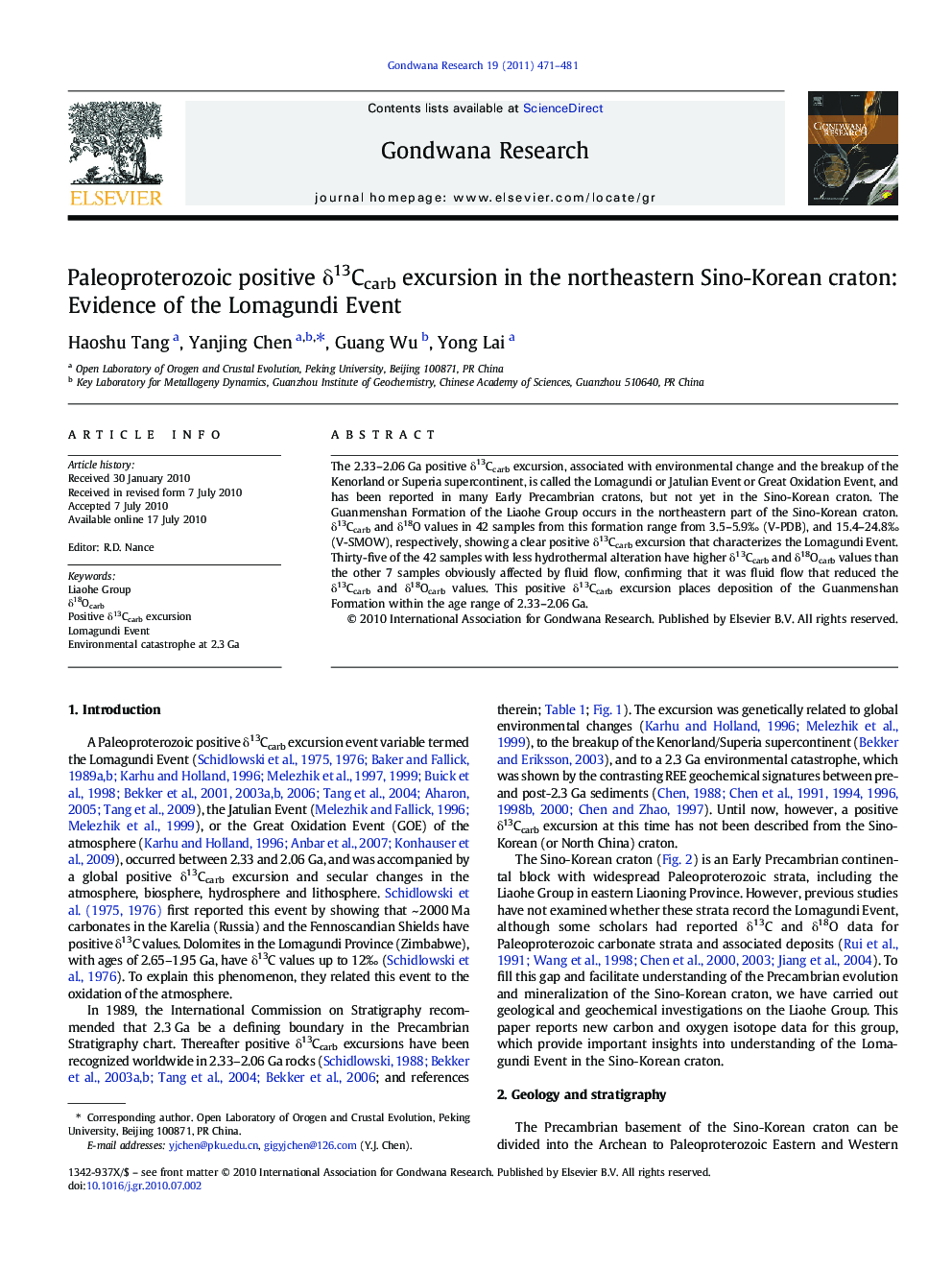| کد مقاله | کد نشریه | سال انتشار | مقاله انگلیسی | نسخه تمام متن |
|---|---|---|---|---|
| 4727342 | 1356371 | 2011 | 11 صفحه PDF | دانلود رایگان |

The 2.33–2.06 Ga positive δ13Ccarb excursion, associated with environmental change and the breakup of the Kenorland or Superia supercontinent, is called the Lomagundi or Jatulian Event or Great Oxidation Event, and has been reported in many Early Precambrian cratons, but not yet in the Sino-Korean craton. The Guanmenshan Formation of the Liaohe Group occurs in the northeastern part of the Sino-Korean craton. δ13Ccarb and δ18O values in 42 samples from this formation range from 3.5–5.9‰ (V-PDB), and 15.4–24.8‰ (V-SMOW), respectively, showing a clear positive δ13Ccarb excursion that characterizes the Lomagundi Event. Thirty-five of the 42 samples with less hydrothermal alteration have higher δ13Ccarb and δ18Ocarb values than the other 7 samples obviously affected by fluid flow, confirming that it was fluid flow that reduced the δ13Ccarb and δ18Ocarb values. This positive δ13Ccarb excursion places deposition of the Guanmenshan Formation within the age range of 2.33–2.06 Ga.
Research highlight
► First discovery of the worldwide 2.33–2.06 Ga positive δ13Ccarb excursion in Sino-Korean craton, which characterizes the Lomagundi event associated with environmental change and Kenorland breakup.
► Recognition of δ13Ccarb and δ18Ocarb decreases in post-depositional diagenesis, metamorphism and hydrothermal alteration.
► Timing of fossil-barren strata using chemostratigraphy or blind-dating method.
Journal: Gondwana Research - Volume 19, Issue 2, March 2011, Pages 471–481